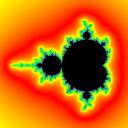Le 4 mai 2021, la plateforme Yahoo Questions/Réponses fermera. Elle est désormais accessible en mode lecture seule. Aucune modification ne sera apportée aux autres sites ou services Yahoo, ni à votre compte Yahoo. Vous trouverez plus d’informations sur l'arrêt de Yahoo Questions/Réponses et sur le téléchargement de vos données sur cette page d'aide.
Non-matching cards probability?
In a card game, two players each start with half of a shuffled standard deck. Each player alternately turns up the top card of their pile.
What is the probability that the players will turn over 4 cards ( 2 each) without a match ?
llaffer: the "non-match" is to be between the two players, eg if the 1st player's cards are, say, K & Q, the 2nd player must not have cards of rank K or Q.
btw, how do i remove the image accidentally invoked ?
done, mercifully !
Good try, Nick, though I believe the answer may not be correct. In any case, after seeing a video explanation of the rules of "snap" (on which this problem has been based), the exact condition is that when the 2 players open a card *turn by turn*, *no consecutive cards* should match.
some 10 hours later, I will recheck your answer for the conditions you took.
for any future answerers: please note the precise definition of "non-matching" in Update 3, and answer accordingly.
2 réponses
- Divide By ZeroLv 7il y a 7 ansRéponse favorite
Here's how I understand the question. Let x and y be Bob's cards and a&b be Alice'. Bob flips a card first and they alternate turns.
It goes x-a-y-b
Therefore:
a can't match x or y.
b can't match y.
I tried this 2 different ways, both of which get an answer of 3464/4165 or about 83.169%. Since the methods agree, I feel good about my answer.
First (and better) method:
Pr(condition met) = Pr(a&b both different from x&y) + Pr(1 card is the same) * Pr(card is in the wrong spot to match)
Pr(a&b both different) = [(48/51)*C(44,2) + (3/51)*C(48,2)] / C(50,2)
(where 48/51 is the probability that x&y are identical, and 3/51 is the opposite)
Pr(one card the same) * Pr(wrong spot) = (48/51)*6*44 / C(50,2) / 4
(There are 4 ways to permute a&b and x&y, and only one permutation is valid for our purposes.)
The sum of those is 3464/4165
Second method:
Pr(x or y matches a) = 3/51 + (48/51)(3/50) = 49/425
Pr(opposite of that) * Pr(y matches b) = 376/425 * [Pr(y not x)*Pr(b=y) + Pr(y=x)*Pr(b=y)]
= 376/425 * [(44/47)(3/49) + (3/47)(2/49)] = 701/4165
answer = 1 - that = 3464/4165
- llafferLv 7il y a 7 ans
The first card can be anything, so 52/52 = 1, so that doesn't change anything yet.
We want the remaining cards to NOT match the first card.
The second card, there are 3 cards left that will match the first card out of the remaining 51, so there are 48 out of 51 cards that are acceptable: 48/51
The third card has the same 3 cards we don't want left out of the remaining 50, so 47 cards are acceptable: 47/50
And the last card, similar logic. 46/49
Multiply them together, and that is your probability that you will not have a pair out of 4 cards:
48/51 * 47/50 * 46/49 = 103776/124950 = 0.8305
About 83% chance of that happening



